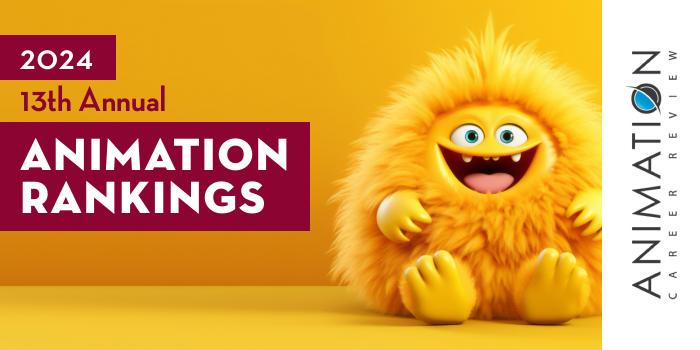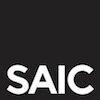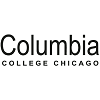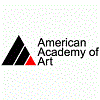Jarvis College of Computing and Digital Media (CDM) at DePaul University (DePaul) houses three schools including Cinematic Arts, Computing, and Design. Across schools, students have access to more than 65 degree programs and minors.
Within the School of Cinematic Arts is an Animation program that features courses taught by award-winning filmmakers who are part of one of the largest full-time animation faculties in the nation; access to a state-of-the-art, 32,000 square foot production facility known as DePaul Cinespace Studios; and the new Jarvis Student Center for Innovation and Collaboration. This 8,000 square-foot open space focuses on industry partnerships and multidisciplinary professional learning across emerging technologies. Collaborations and projects between students and faculty emphasize innovation and community needs.
Cinespace and other CDM/SCA studios and facilities provide access to latest industry animation software, tools, and technologies. This includes Cintiq labs, professional animation and effects software, 3D printing, stop motion stages and fabrication studios, sound studios, 3D motion capture, and motion control.
The Animation program at DePaul University has seven degree options including the Animation BA, BFA, MA, MFA, BA/MA, and BFA/MA, and the Computer Science (CS) + Animation (CS+ANI) BS with an Animation Technical Director (TD) concentration. An Animation TD minor is also available.
The Animation BFA has concentrations in 3D Animation, Visual Effects, Motion Graphics, Storyboarding and Character Design, Cinema, and Game Art. While the Animation BA does not offer a concentration, students in this program may enhance the degree in focused areas through major and open electives. Examples of major electives include Digital Puppet Animation; Visual Effects; Screenwriting for Majors; Hybrid Animation; Stop Motion Animation; and Sound Design for Animation.
BA students may choose open electives from more than 20 Jarvis College minors. Minor examples include Experimental Filmmaking; Graphic Design; Comedy Filmmaking; User Experience Design; Television Production; Information Technology; Film Production; Visual Effects; and Designing for Physical Technology.
The Animation MA at DePaul University allows students to concentrate in 3D Animation, Traditional Animation, Storyboarding and Character Design, Motion Graphics, or Technical Artist. Course examples for the program include 3D Animation Production; Animation Figure Study; Advanced Topics in Visual Effects; Topics in 3D Animation; and Game Art Pipeline.
The Animation MFA follows the project model. Students will spend their time creating a single project with the assistance of an MFA co-chair and MFA faculty mentors. The program is designed for animators who have earned an undergraduate degree in the visual arts. Examples include Animation, Art, Illustration, Graphic Design, and Film.
The multidisciplinary CS+ANI is designed for students seeking technical artistic roles in animation and game development. In addition to the concentration in Animation TD, the program has a concentration in Game Art TD. Course examples for the program Concepts of Programming Languages; 3D Animation; Optimized C++; Motion Graphics Foundations; Advanced 3D Rigging; 3D Design and Modeling; Animation Production; and Game Art Pipeline.
CS+ANI students also benefit from interdisciplinary collaborative group project experiences with teams of students majoring in areas such as 3D animation, game art, storyboarding and character design, game programming, and game design.
All DePaul Animation students have the unique opportunity to participate in the Los Angeles Quarter Program. This 10-week immersive experience allows students to intern at major Hollywood studios such Disney, DreamWorks Animation, Sony Studios, Nickelodeon, The Jim Henson Company, Titmouse, and Warner Bros. Animation.
Other program benefits include the visiting artist series, where past guests have included artists from Disney and Pixar; access to the Animation Lodge; and participation in Project Bluelight. Students at The Lodge collaborate on group projects, network, and build their portfolios. Project Bluelight provides hands-on experience in motion picture production to all interested students.
Graduates of the Animation programs at DePaul University are prepared to pursue careers in all industries that require animation and game design and development skills. Program alumni have been hired by major studios and gaming companies such as DreamWorks Animation, Electronic Arts (EA), Warner Bros. Animation, Google, Cartoon Network, Nickelodeon, Blizzard Entertainment, Disney Animation Studios, Iron Galaxy Studios, BioWare, and LAIKA Studios.
Serving approximately 20,920 students, DePaul University is the largest Catholic university in the United States. Founded in 1898, the school is also the nation’s 12th-largest private, not-for-profit university, and the largest private, not-for-profit college in the Midwest. DePaul provides more than 300 undergraduate majors and graduate programs across two campuses, and 10 academic colleges and schools. DePaul University is accredited by the Higher Learning Commission (HLC).







